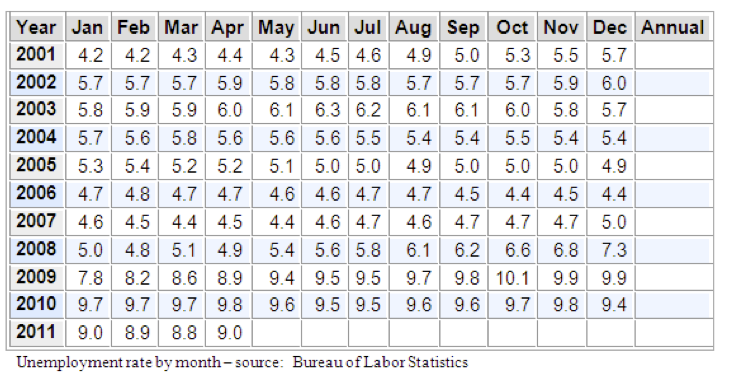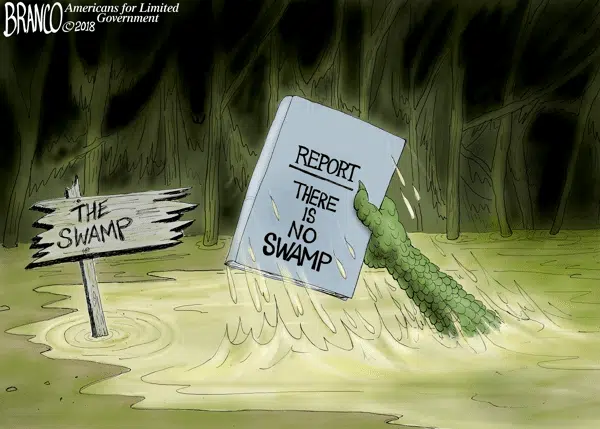 By Rick Manning – The Obama economy continues to drift downward as our nation’s jobless rate is back at 9 percent with the Bureau of Labor Statistics (BLS) reporting that the number of unemployed persons increased by 205,000 in April.
By Rick Manning – The Obama economy continues to drift downward as our nation’s jobless rate is back at 9 percent with the Bureau of Labor Statistics (BLS) reporting that the number of unemployed persons increased by 205,000 in April.
Yet, incredibly the BLS writes in their May 6, 2011 release that, “The number of unemployed persons, at 13.7 million, changed little in April.”
205,000 more people unemployed is not a small change by anyone’s standards.
To put it into perspective, 205,000 newly unemployed is the equivalent of slightly fewer than two-thirds of everyone who currently holds a job in the entire state of Alaska being laid off.
Ironically, the same report from BLS shows that there are almost three million more people “not in the labor force” in April 2011, than in April 2010 with the number of drop outs increasing by 131,000 last month alone.
All this bad news in the employment report was overshadowed by the contradictory claim in the report that 244,000 new private sector jobs were created by the economy in April.
While I wish the economy had grown by almost a quarter of a million jobs, it is hard to reconcile this number with the reality of the rest of this and other U.S. Labor Department reports.
For instance, the number of people that BLS reports as being employed in April 2011 dropped by 190,000, a number that is irreconcilable with the claimed 244,000 new jobs created claim.
Also, the weekly U.S. Labor Department report on new Unemployment Insurance Claims that closed out the month of April showed that unemployment was accelerating through the month.
To quote the Labor Department’s May 5th press release, “In the week ending April 30, the advance figure for seasonally adjusted initial claims was 474,000 [this was revised upward to 478,000}, an increase of 43,000 from the previous week’s revised figure of 431,000. The 4-week moving average [virtually all of April] was 4 31,250, an increase of 22,250 from the previous week’s revised average of 409,000.”
To put the new Unemployment Insurance Claims data into perspective, when the economy was creating jobs in the mid-2000’s, seasonally adjusted new UI claims did not run above 400,000 in a week a single time in the almost five years between September 13, 2003 and July 19, 2008. During this same time period the unemployment rate went from 6.1 down to a low of 4.4 and back up to 5.6 percent.
The point of all these numbers and reports is that the outlier in the April unemployment report is the claim that the economy created 244,000 jobs. When virtually every other data point is going in one direction, and one data point in another, the prudent person questions the validity of the number that doesn’t fit. In this case, unfortunately, the new job creation number sticks out like a sore thumb.
The most compelling proof of all is in our neighborhoods, where the Gallup polling organization reports that nearly one in five is “underemployed.”
This is hardly the robust scenario that a reasonable Keynesian economist would expect after both a massive injection of fiscal stimulus topped by almost unprecedented monetary intervention in the economy by the Federal Reserve.
Now, the Fed’s monetary easing is scheduled to end in June, and the Obama stimulus has almost run its course. At the same time, our nation’s private sector job creators face significantly higher health care costs due to ObamaCare and energy driven inflation that is working its way into prices as the Producer Price Index has shot up by 6.8 percent in the past year.
Perhaps the most comforting thing to do is to just look at the unemployment rate for the past six months and ignore the numbers behind the rate that show a workforce that is abandoning the traditional job market in droves, rather than one that is getting new jobs in an economy that is beginning to thrive.
Unfortunately, when you look behind the headline numbers, it is almost impossible to not conclude that our nation is about to experience the dreaded double dip recession as it sinks back into contraction. Great for a roller coaster ride, bad for the economy.
Let’s hope this time, the numbers lie.
Rick Manning is the Communications Director of Americans for Limited Government and the former Public Affairs Chief of Staff for the U.S. Department of Labor. You can follow Rick on Twitter at @RManning957.







